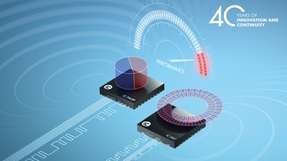The street as social network is neither a new strategy to attract members of facebook founder Mark Zuckerberg nor is it to protect our highway connections by passwords. The purpose of such a network is based on the intention to have the driver reach his destination faster, more economically and safer - since annoying traffic jams, just to name an example, not only cost money and nerves, but often human lives, too. All these factors could considerably be reduced if we were warned of an accident, traffic jam or other obstacles in due time. These could be facilitated by Car2Car technology, the practical viability of which has not yet been proved, but which is currently tested in numerous projects worldwide.
Car2Car communication comprises the information exchange between automobiles. This mutual exchange of data on traffic density, jams, accidents and unexpected disruptions ensures fast reactions of the following cars. In this case the driver is exclusively informed about the facts which are relevant for him in within a given area. Therefore accidents and traffic jams outside of this area remain hidden to him. New route calculations or the speed adaptation to the new circumstances can be carried out within seconds, and they reduce the potential of accidents as well as the risk of traffic jams. Moreover communicative cars improve the traffic flow which results in lower fuel consumption. This way driver safe money on the one hand, and on the other hand the environment is protected.
In addition there is another implementation of intelligent driving, the so-called Car-2-X communication, which represents the information exchange between vehicles and the traffic infrastructure. For this purpose relevant vehicle systems as for example certain data busses must be connected with the in-vehicle communication platform, the so-called „ITS Vehicle Station“. This can then transmit important information to following and also to oncoming road users as well as to the traffic infrastructure.
In consequence this solution enables situation-specific control of the traffic lights and also of digital signposts to guarantee traffic flow and timely prediction of potential dangerous situations. Besides the normal traffic infrastructure further so-called „ITS Roadside Stations“ for traffic control will be installed which can transmit data to the vehicles, too. However not only the transmission from vehicle to vehicle will be possible, but also the transmission of information through many vehicles as intermediate stations - referred to as „Multihopping“.
Furthermore relevant information from the cars as well as from the „Roadside Stations“ can be stored and transmitted, designated as „Store & Forward“. The underlying transmission technology is primarily based on two systems: Firstly the mobile radio standard UMTS and secondly the WLAN standard IEEE 802.11p published in 2010, which was developed for the establishment of WLAN technology in vehicles. In essence, though, this standard is only an extension of the IEEE 802.11 standard.
As the suitability of this system for daily use has not yet been proved one of the biggest field tests referring to Car2X communication is currently under way in the Rhine-Main region around Frankfurt.Under the project name simTD (Sichere Intelligente Mobilität - Testfeld Deutschland; safe intelligent mobility - test field Germany) a test fleet of more than 100 vehicles currently drives on motorways, highways and urban roads to create different scenarios. The system´s reaction on the generated situations is used to test the efficiency and effectiveness of the systems.
Between 2012 and 2013, the practical test of the simTD project takes place, which primarily aims at increased traffic safety and traffic efficiency through Car2Car technology. Additionally the offerings of value-added services are to be integrated and even expanded, too. Information on points of interest and hotels next to the route will only be the beginning. The availability of different music and media options is planned to be possible as well - there are almost no limits to the ideas here.Taking part on this project are the German automobile manufacturers Daimler, BMW, Volkswagen, Audi and Opel, complemented by Ford. Moreover participating in simTDare tier-one automotive suppliers like Bosch and Continental, telecom companies like for instance Deutsche Telekom and various universities. simTDis promoted and financed by three German federal ministries. Further promoters are the federal state of Hesse and the town of Frankfurt plus supporters from the economy.














